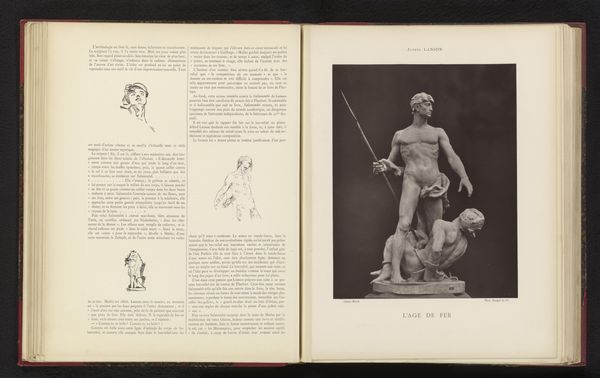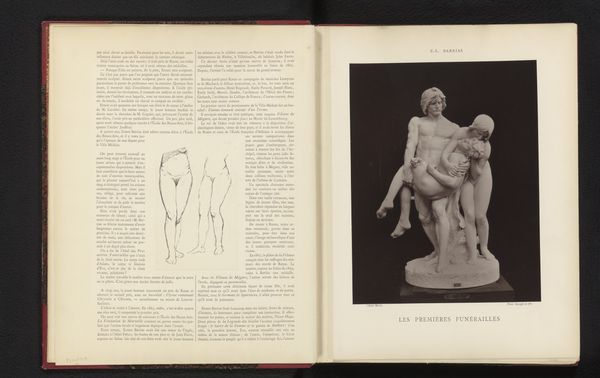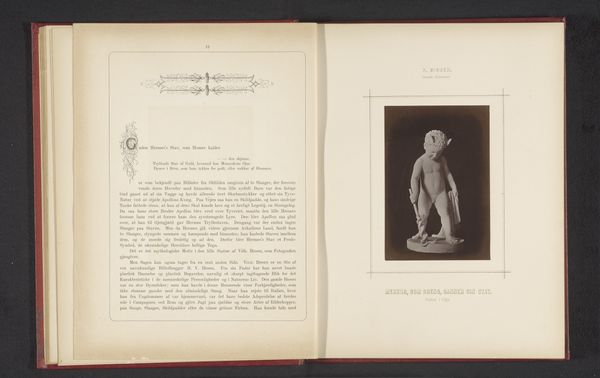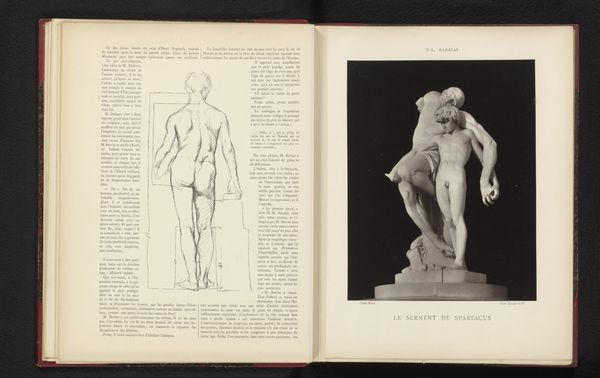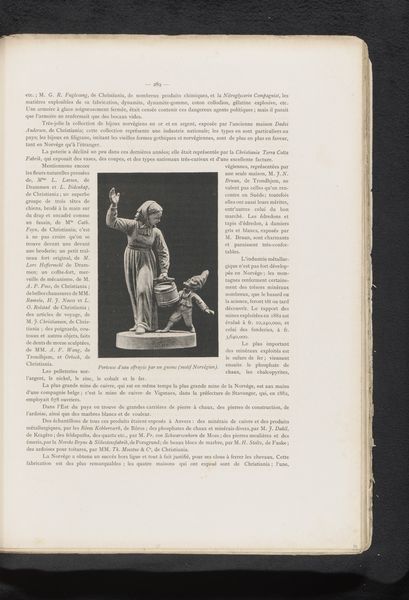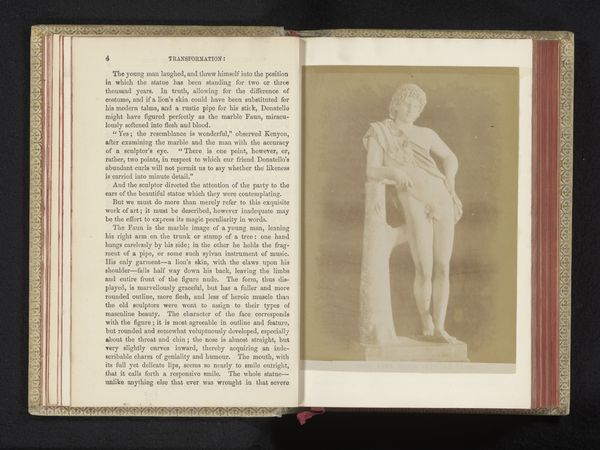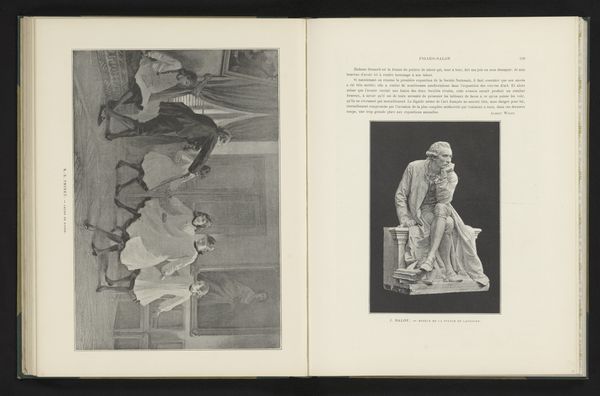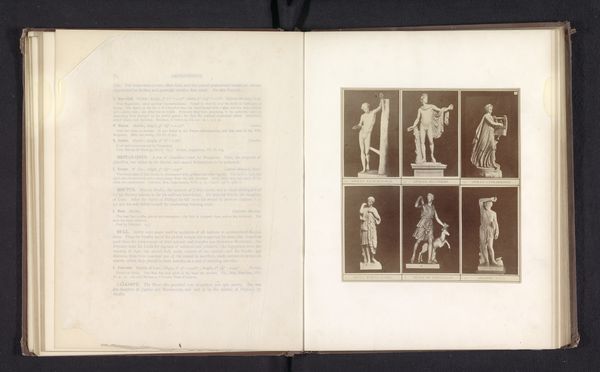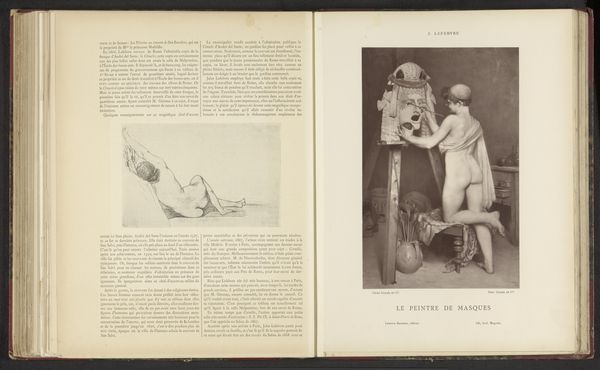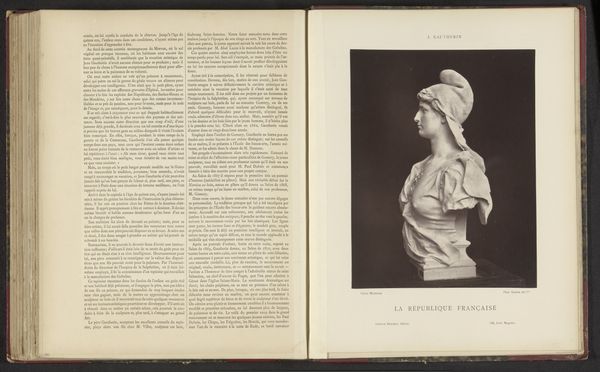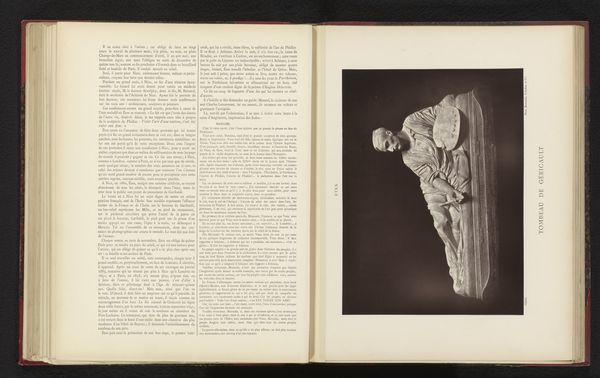
Dimensions: height 246 mm, width 192 mm
Copyright: Rijks Museum: Open Domain
Curator: Standing before us is Louis-Ernest Barrias's bronze sculpture, "Mozart enfant," created before 1884. It currently resides here at the Rijksmuseum. Editor: My immediate impression is one of restrained energy. There's a stillness to it, yet the slightly tilted head and the bow held mid-stroke suggest a vibrant, internal rhythm. It feels very posed, idealized. Curator: It does capture a Baroque aesthetic, doesn't it? Notice how Barrias uses the youthful Mozart to represent artistic genius, perpetuating the notion of innate talent bestowed from a young age. The violin itself is more than an instrument; it's a symbol of cultivated potential and the divine gift of music. Editor: And I see the risks in idealizing figures like Mozart. Doesn’t it inadvertently feed into a narrative of exclusivity within the arts? While this sculpture surely seeks to inspire awe and reverence, it could also create a chasm between the "genius" and the everyday person. Where’s the consideration of social circumstances, of opportunity? Who gets to even touch a violin? Curator: That’s a valid point. But let's also consider this through the lens of historical artistic tropes. Throughout art history, depicting youthful figures has been a way to access the idea of innocence and purity—but often linked to a specific societal narrative. Here, Mozart is a cultural icon recast in youthful perfection, emphasizing legacy and historical importance. Editor: That historical perspective is important. To the viewers of the day, what might the image of a prodigy suggest? Were they drawn to it simply to celebrate talent, or to further stratify the artist from everyone else? We have to remember art doesn't exist in a vacuum. It always sends and perpetuates certain ideas about class, labor, ability. Curator: I appreciate you bringing the historical into conversation with current viewpoints. It reframes the way we interpret symbolic representation. For me, reflecting on how different viewers relate with culturally recognizable icons in sculpture encourages greater self-reflection of my own. Editor: And for me, looking back at this sculpture, I'm reminded how crucial it is to analyze whose stories are prominently sculpted and preserved, and whose voices are left silent. To move ahead ethically, art must always encourage new voices and challenge old orders.
Comments
No comments
Be the first to comment and join the conversation on the ultimate creative platform.
